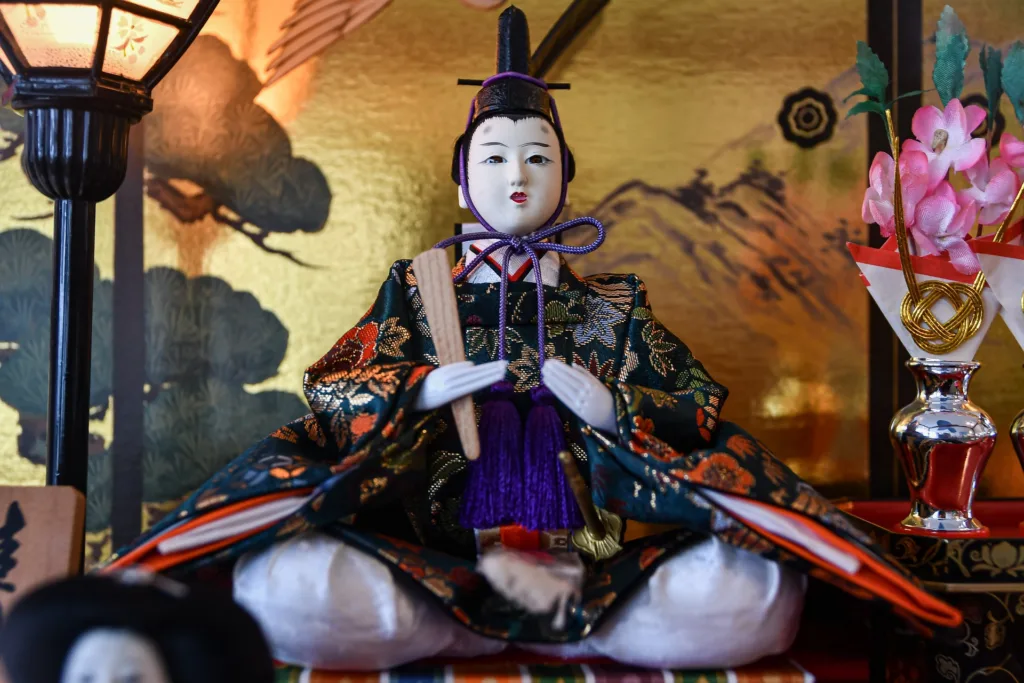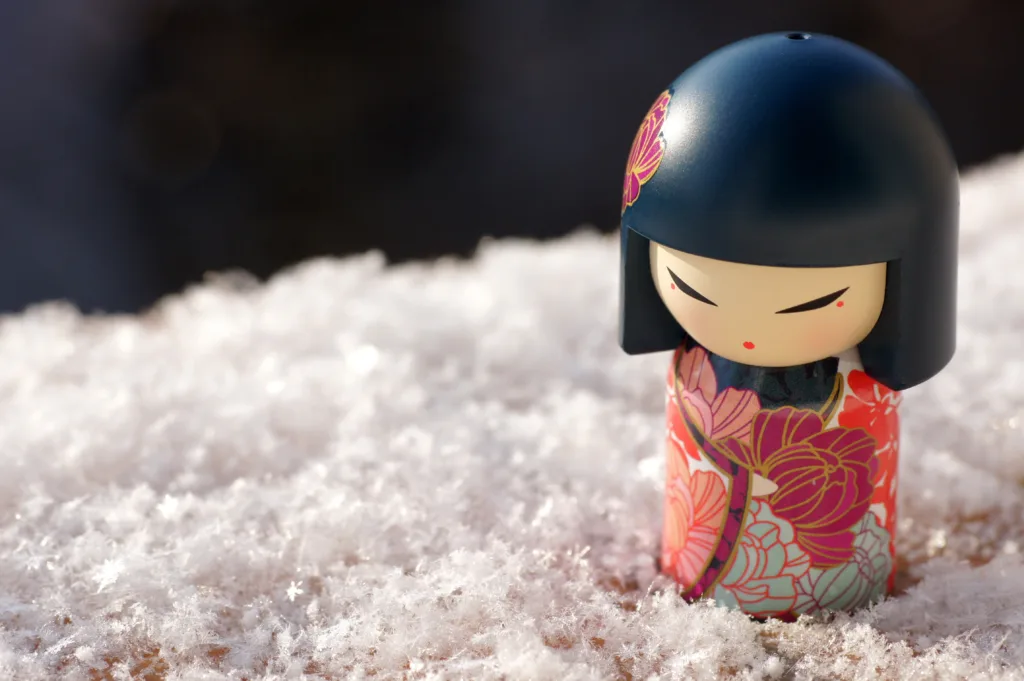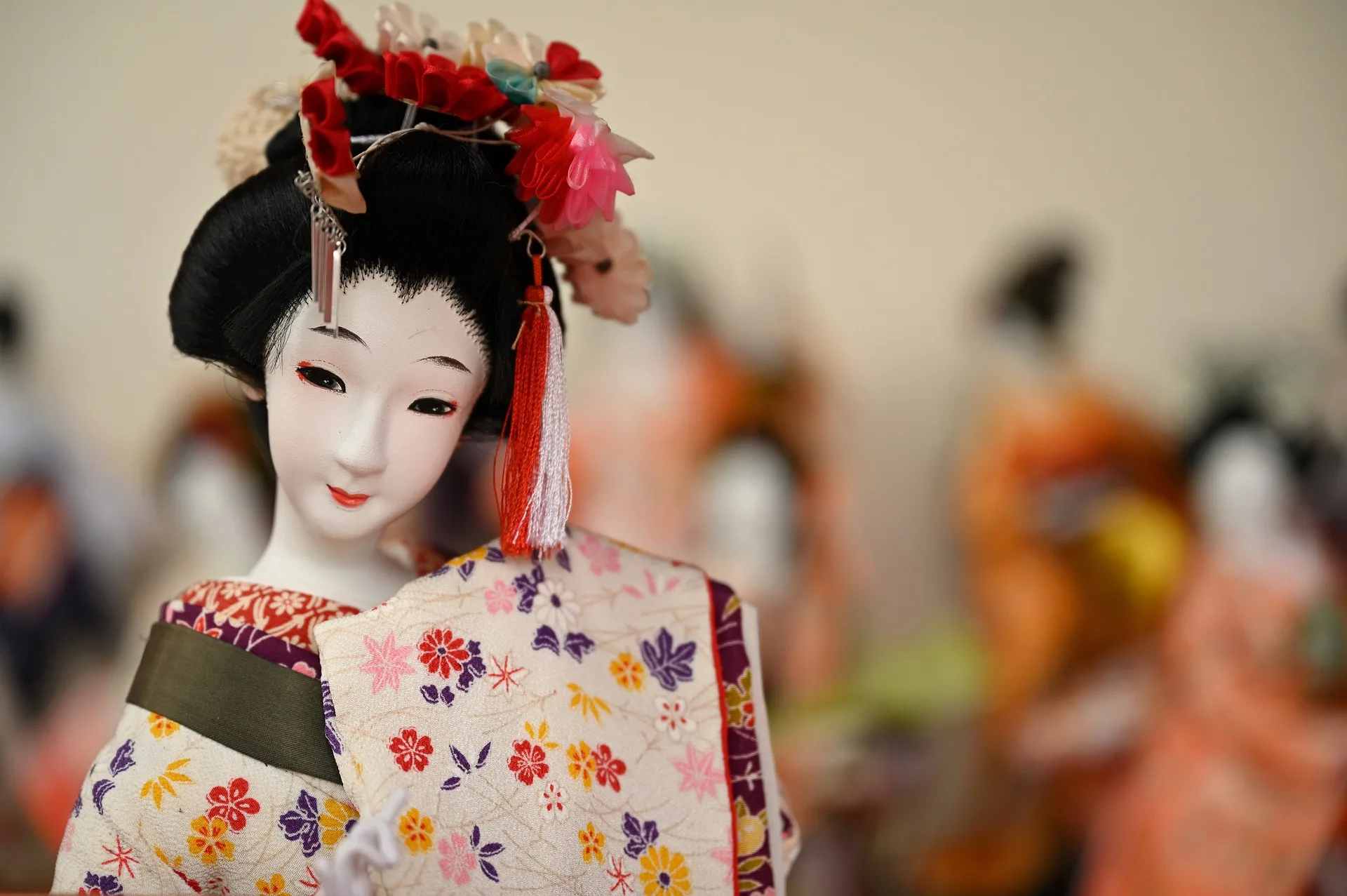Konnichiwa! Ningyo dolls (人形) are traditional Japanese dolls that have been around for centuries. These dolls are one of the most iconic symbols of Japanese culture and are cherished by collectors and enthusiasts worldwide. Ningyo dolls are notable for their intricate designs, vibrant colors, and exquisite details that reflect the artistry of Japanese craftsmanship. Let’s explore the history of ningyo dolls, the different types of ningyo dolls, their features, and their uses.
Affiliate Disclaimer: I only recommend products I would use myself and all opinions expressed here are our own. This post may contain affiliate links that at no additional cost to you, I may earn a small commission. As an Amazon Associate I earn from qualifying purchases.

Planning a trip to Japan?
History of Ningyo Dolls
The history of ningyo dolls dates back to the Edo period (1603-1868) in Japan. Ningyo, which means “human figure” in Japanese, was first used to refer to the dolls used in religious ceremonies. These dolls were believed to possess spiritual power and were used as talismans to ward off evil spirits.
Over time, ningyo dolls became popular as toys and decorative items for households. The dolls were made using a variety of materials such as clay, wood, and papier-mache. The design of the dolls also evolved, and they began to reflect the cultural and social changes of the time. Today, ningyo dolls are highly prized for their historical and cultural significance.
Types of Ningyo Dolls
Hina ningyo dolls are a type of Japanese doll that is displayed during the annual Girls’ Day festival (Hinamatsuri). These dolls are usually displayed on a tiered platform with the emperor and empress dolls at the top. The dolls are adorned with traditional clothing, and each doll represents a different member of the imperial court.

Gogatsu ningyo dolls are another type of Japanese doll that is displayed during the annual Boys’ Day festival (Kodomo no Hi). These dolls represent samurai warriors and are usually displayed on a tiered platform along with other decorative items such as banners and helmets.
Kokeshi dolls are a type of ningyo doll that originated in the northern region of Japan. These dolls are made from wood and have a simple design with a cylindrical body and a round head. Kokeshi dolls were traditionally made by craftsmen who would carve and paint each doll by hand.


Features of Ningyo Dolls
One of the defining features of ningyo dolls is their intricate designs. These dolls are often adorned with elaborate clothing, accessories, and hairstyles that reflect the fashion trends of the time. The dolls also have intricate facial features, such as finely crafted eyes and lips, that give them a lifelike appearance.
Ningyo dolls are known for their vibrant colors, which are achieved using a combination of natural and synthetic dyes. The colors used on the dolls are often bright and eye-catching, which adds to their aesthetic appeal.
Another defining feature of ningyo dolls is their exquisite details. The dolls are often adorned with intricate embroidery, beading, and other decorative elements that require a high level of skill and precision to create.
Uses of Ningyo Dolls
Ningyo dolls are highly prized by collectors and enthusiasts worldwide. Many collectors specialize in specific types of ningyo dolls, such as hina ningyo dolls or kokeshi dolls, and may spend years building their collections.
Ningyo dolls are also commonly used as decorative items in households and businesses. The dolls can be displayed in a variety of ways, such as on a shelf, in a glass case, or on a tiered platform.
Finally, ningyo dolls have significant cultural and historical significance in Japan. These dolls are an integral part of Japanese culture and are often used in traditional ceremonies and festivals. For example, hina ningyo dolls are displayed during the Hinamatsuri festival, which celebrates the health and happiness of young girls. Gogatsu ningyo dolls are displayed during the Kodomo no Hi festival, which celebrates the growth and happiness of young boys.
In addition to their use in festivals and ceremonies, ningyo dolls have also been featured in literature and art throughout Japanese history. For example, the famous writer Junichiro Tanizaki wrote a short story called “The Gourmet Club,” in which a group of men gather to admire a rare ningyo doll. The doll becomes the subject of intense fascination and obsession, ultimately leading to tragedy.
Ningyo Dolls in Modern Times
Despite the popularity of modern toys and technology, ningyo dolls remain a cherished part of Japanese culture. Today, many artisans and craftsmen continue to create traditional ningyo dolls using the same techniques and materials that have been used for centuries.
In recent years, there has also been a resurgence of interest in ningyo dolls among younger generations in Japan. This has led to a renewed appreciation for the artistry and craftsmanship that goes into creating these exquisite dolls.
Final Thoughts
Ningyo dolls are a fascinating and enchanting piece of Japanese culture. From their intricate designs and vibrant colors to their historical and cultural significance, these dolls are a testament to the artistry and craftsmanship of Japanese craftsmen. Whether you are a collector, enthusiast, or simply interested in learning more about Japanese culture, ningyo dolls are sure to capture your imagination and leave you with a lasting impression.




One thought on “Ningyo Dolls (人形): An Enchanting Piece of Japanese Culture”